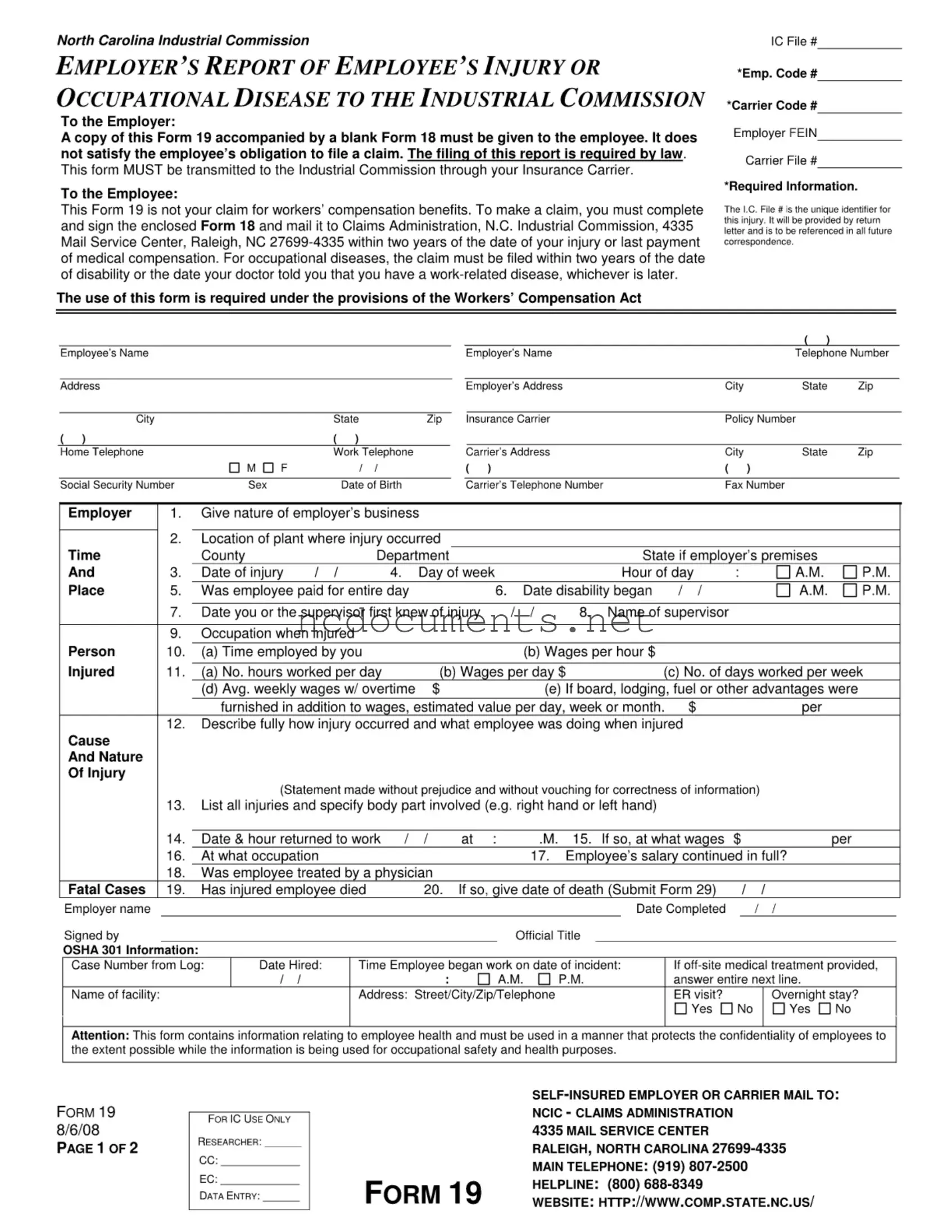The Form 18, also known as the Notice of Accident, is closely related to the Form 19. While the Form 19 is the employer's report of an employee's injury, the Form 18 is the actual claim that the employee must file to seek workers' compensation benefits. The employee must complete and submit the Form 18 within two years of the injury or the last payment of medical compensation. Both forms are essential in the claims process, with the Form 19 serving as a notification to the Industrial Commission and the Form 18 as the formal request for benefits.
Another document that shares similarities with Form 19 is the OSHA Form 301, also known as the Injury and Illness Incident Report. This form is used by employers to document work-related injuries and illnesses. Like Form 19, OSHA Form 301 requires detailed information about the incident, including the nature of the injury and circumstances surrounding it. Both forms aim to ensure proper reporting and documentation of workplace injuries, although OSHA Form 301 is specifically geared towards compliance with federal regulations.
The Form 29, or Report of Fatality, is another document that connects with Form 19. This form is used when an employee dies as a result of a work-related injury. While Form 19 reports on injuries, Form 29 specifically addresses fatalities and requires details about the incident leading to the death. Both forms are part of the broader workers' compensation process and help ensure that appropriate actions are taken following workplace incidents.
Form 30, the Application for Hearing, is another related document. If a dispute arises regarding a claim, an employee may use Form 30 to request a hearing before the Industrial Commission. This form is essential for employees who believe their rights to compensation are being challenged or denied. While Form 19 serves as an initial report of an injury, Form 30 is a subsequent step in the process if issues arise regarding the claim.
The Form 26, known as the Agreement for Compensation, also shares a connection with Form 19. This document is used when an employer and employee agree on the compensation to be provided for an injury. It formalizes the agreement and ensures that both parties are clear on the terms. While Form 19 initiates the process by reporting the injury, Form 26 finalizes the compensation agreement between the employer and employee.
Form 27, the Employer's Reimbursement Request, is related to Form 19 as well. This document is used by employers to request reimbursement for compensation payments made to employees. It serves as a follow-up to the initial injury report and ensures that the employer can recover costs associated with workers' compensation claims. Both forms are part of the workers' compensation system, addressing different aspects of the claims process.
In the world of dog ownership, understanding the legal requirements is important, and one such essential document is the Puppy Bill of Sale, which outlines the terms of the transfer of ownership and helps prevent future disputes.
The Form 24, or Application to Terminate Compensation, is another document that interacts with Form 19. If an employer believes that an employee is no longer entitled to benefits, they may file a Form 24 to terminate compensation. This form requires justification and must be submitted to the Industrial Commission. While Form 19 reports the injury, Form 24 is used to contest ongoing compensation claims, highlighting the dynamic nature of the workers' compensation process.
Lastly, the Form 18B, which is a Supplemental Report of Injury, is similar to Form 19 in that it provides additional details about an employee's injury after the initial report. This form can be used to update the Industrial Commission on the status of the injury or any changes in the employee's condition. Both forms are essential for maintaining accurate records and ensuring that all relevant information is communicated effectively throughout the claims process.
